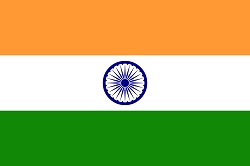India's program to track the side effects of drugs in patients around the country is being hindered by low staff, lack of equipment and poor funding, according to Reuters.
India's pharmacovigilance program, which was introduced in 2010, currently sends data that medical professional collect of drug side effects to VigiBase--the database of the World Health Organization (WHO)--as part of a global initiative to improve drug safety.
Low staff numbers and poor equipment, as well as few properly trained personnel, have hampered the collection of this data, however. These important details about drug reactions could be dangerous to miss, Indian hospital employees told Reuters.
The report also suggests that drugmakers could play a bigger part in getting drug side effects reported. News drugs made in India require permission from the national drug control after efficacy data from clinical trials and safety checks are submitted. When a drug is approved, a company needs to send safety reports for four years--afterward, drugmakers are no longer required to send reports on side effects.
 Finding quality control regulators and conducting inspections on the ground is also a factor. The Indian Council for Research on International Economic Relations said the Central Drugs Standard Control Organisation (CDSCO) had a "sanctioned strength" of 111 officers in 2008 that rose to 474 by 2014, the Business Standard reported in November last year. That number actually turned out to be 220 regular officers.
Finding quality control regulators and conducting inspections on the ground is also a factor. The Indian Council for Research on International Economic Relations said the Central Drugs Standard Control Organisation (CDSCO) had a "sanctioned strength" of 111 officers in 2008 that rose to 474 by 2014, the Business Standard reported in November last year. That number actually turned out to be 220 regular officers.
The lack of quantity and quality in drug reaction data means India's government has less information on judging whether certain drugs have adverse side effects. Though the number of reports has risen, for a country that is one of the world's biggest consumers of medicine, India has a long way to go to get their pharmacovigilance up to speed.
- here's the story from Reuters